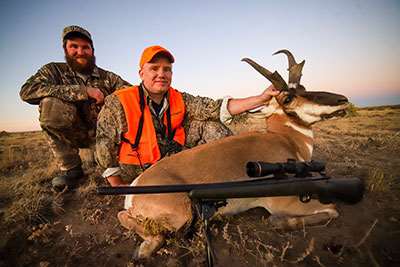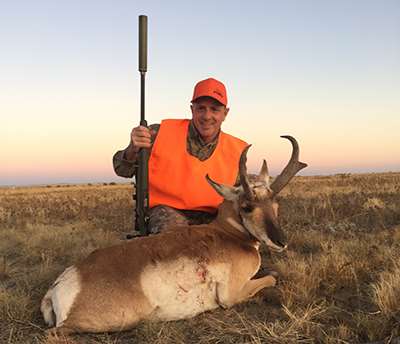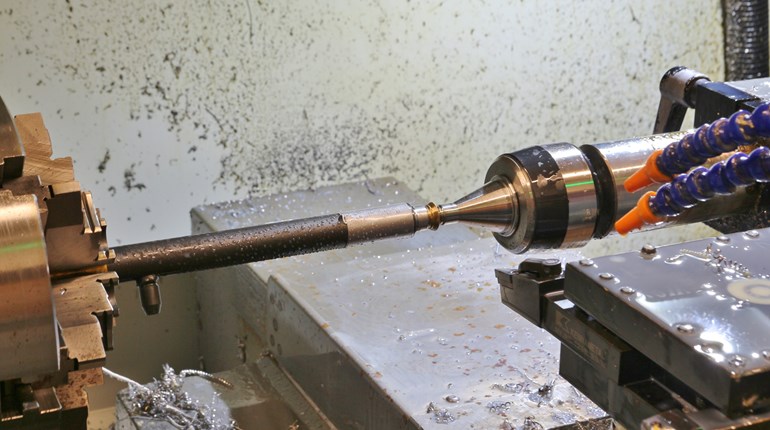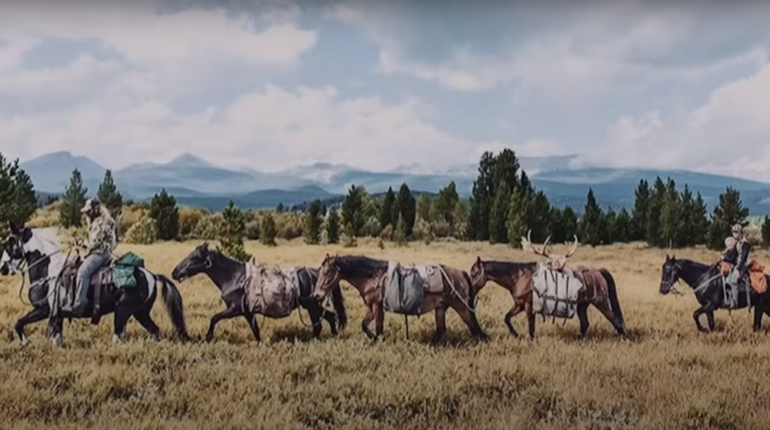
There was this beautiful new Remington Model 700 American Hunter, a version of the venerable Model 700 bolt-action rifle named for the NRA’s official journal American Hunter, waiting for me at a ranch in Colorado. I pulled it out of a travel gun case and admired this particular rifle’s features—its 20-inch barrel coated with Cerakote; its heavy bolt handle I knew I could grab with heavy gloves; its Bell & Carlson stock with aluminum bedding block; its externally adjustable X Mark Pro trigger….
But there was missing something the others on this hunt with Remington had. This rifle has a threaded muzzle and they had suppressors screwed into their rifles.
“Where’s my rifle muffler?” I asked.
Several said they’d gladly loan me theirs after they got their antelope. I thought that very kind of them and went off to shoot the rifle as they went hunting.
At the range I noted that the wind on the rolling ranchland east of the Front Range was 15-18 mph and gusting to 25 mph. This was hardly extreme or even abnormal conditions in the West, but it meant I would have to take wind drift into consideration. This rifle is chambered in 6.5 Creedmoor. I’d be shooting a 127-grain bullet loaded by Hornady. I knew a 15 mph crosswind would push this bullet about 10 inches at 300 yards. The bullet’s drop—zeroed at 200 yards, for example, it would drop about 8 inches at 300 yards and 22 inches at 400 yards—gave me the rest of my math.
The ranch (fulldrawoutfitters.com) has a beautiful range that stretches to 1,000 yards and beyond. I quickly became comfortable with this rifle in the aforementioned conditions out to 400 yards and decided that would be my limit on this antelope hunt.
Before I was even done shooting the rifle, a hunter was back with an antelope he’d spotted and stalked. After all the necessary congratulations, he offered me his suppressor. This is where I made my mistake. I declined, because attaching the suppressor would mean I’d have to re-sight in the rifle. I had become comfortable with it—well, that’s an understatement. Even in the wind, I had no trouble shooting tight groups to 400 yards with this rifle Remington says was “meticulously designed to be the perfect whitetail rifle,” but that I soon found is actually an ideal big-game rifle for deer and antelope. The thing was, I simply didn’t want to mess with its zero. I wanted to go hunting.
Hours later I was crawling over a grassy hill in this spectacular panorama of rolling terrain with the Rocky Mountains, indeed the glorious Spanish Peaks, in the background just west. Ahead was a big antelope buck. My guide was crawling behind me. I was pushing my rifle and shooting sticks as I went. Behind us was a cameraman filming for American Hunter.
Using a small bush for cover, I stopped and slowly put up my shooting sticks. I then put the rifle on the sticks and slowly came up behind it. My guide called the range—330 yards. The buck was facing us and he’d spotted us. The buck wasn’t sure what we were, but he could go at any time. I held for the wind drift and bullet drop and squeezed the trigger.

We heard the bullet hit—thump! The buck ran over a rise and a dust plume rose where he fell.
When the congratulations quieted down, my guide said, “My ears are ringing. I need to remember to wear earplugs.”
I apologized and regretted my decision not to re-sight in the rifle with the suppressor screwed onto the Remington Model 700 American Hunter’s barrel. This was a real example illustrating why suppressors are simply more polite.

Decades ago many gun owners didn’t think it was a big deal that they didn’t wear earplugs or muffs at the range. Many shooters who grew up in that culture now have hearing loss or problems with tinnitus (ringing in their ears). Massive public education—much of it from the NRA—taught us about the dangers of shooting without ear and eye protection.
Now we know suppressed guns are polite guns. The trouble is too much of the general public doesn’t know this. When a person who doesn’t shoot sees a suppressor their first thought is how these hearing-saving devices have been portrayed in the movies. This has given politicians who don’t like our freedom to own and carry firearms an opening to treat these devices as if they are the tools of killers.
This is why we have to continue to inform the public that firearm suppressors are just as important as mufflers are on autos. They need to know that suppressors don’t make guns whisper quiet, as so many movies suggest. A suppressor doesn’t even completely remove the need for additional hearing protection, but they can help a great deal. When a gun is fired, a large volume of hot, high-pressure gas exits the muzzle along with the bullet. A suppressor contains some of those gasses for a fraction of a moment and allows them to expand and cool more gradually by circulating them around internal baffles. This helps to lower the decibel level. This won’t, however, eliminate the sound entirely, and it has no effect on the mini sonic boom created by a bullet moving faster than the speed of sound.
This is why you do still need to wear hearing protection. A suppressor, as I said, simply makes firearms more polite.
I wish I had extended this courtesy to my guide and to my ears on that antelope hunt.
Hopefully, someday we’ll get the word out enough so that Congress will pass and a president will sign “The Hearing Protection Act,” as this would remove a lot of the bureaucratic red tape involved in buying and using suppressors. (Frank Miniter’s latest book is The Ultimate Man’s Survival Guide to the Workplace.)


































